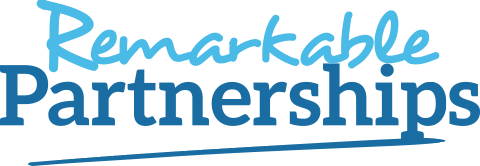You’ve had a fantastic first meeting with a prospect. You gave them some great ideas and they gave you all the right signs – nodding as you spoke and agreeing that the fit was really strong. Then when you go to follow up the meeting, they just don’t respond.
We’ve all been there. It can be incredibly disheartening when a prospect goes cold on you. But we’re here with three key tips to bust those ghosts and get you the partnerships you and your cause deserve.
Know that “no answer” doesn’t mean no
Sumatran Orangutan Society had a great first meeting with a global engineering firm in January of 2021 with their Head of Climate Resilience. In this meeting, the prospect said they “saw how powerful this could be for the firm” – but after the meeting, stopped responding.
When a company doesn’t reply, it is very easy to take this as a sign that they are not interested. That “no answer” is code for “no”. But it doesn’t mean that – it simply means that they haven’t made their decision yet.
Knowing this, the SOS team followed up with patient persistence. In August, the firm came back and were able to book a meeting in within a week. The contact explained that their company had been going through significant structural changes, but that they’d been progressing the partnership internally. They thanked the SOS team for their patience, and communication has been far more consistent since.
This example shows us that it’s important to remember – we can’t read our prospects’ minds. If it is a no, they will tell us. So don’t count yourself out of the race – keep following up with patient persistence.
Break patterns
It is estimated that the average adult makes up to 35,000 decisions a day. Everything from what mug to use through to what show to watch on Netflix. With all of these micro-decisions to make, our brain chooses the path of least resistance.
This ‘path of least resistance’ includes repeating choices we’ve made previously. So if they’ve already chosen not to respond to your email once, they will see that and will be nudged towards not responding again.
Knowing this gives us a clear insight – you should always start a new email, rather than respond to yourself. This takes away that nudge. Treat each follow-up email as a fresh start. Try new subject lines and calls to action. If a few emails haven’t worked, try reaching out via WhatsApp or LinkedIn.
Activate the law of reciprocity
When Cats Protection realized that a number of their prospects weren’t responding during the second lockdown, they decided to change up their new business approach. Rather than following up for another meeting, they decided to take a generous approach. They emailed all of their prospective partners a link to their “Moggy Modules” – a tool developed by their community team to engage primary school children.
They sent the Moggy Modules out with a nice note saying that they understood lots of people were struggling with their children being at home all the time, and this was something that might help. That they had seen this resource and thought of the person.
The response was incredibly strong. The Cats Protection team had activated the law of reciprocity. This is the behavioral science law that states that when we are given something for free, it creates a deep psychological urge to give something back to that person. In this case, what the companies gave back to Cats Protection was a meeting to move the partnership forward.
This brings us to the question: what gift could you give your prospects? Maybe you have a great resource you could share, story you could tell or physical item you could post. It’s worth thinking about.
In summary, you want to make it as easy as possible for the prospect to come back to you.
By following up on a regular basis, you bring yourself back to their mind. By breaking patterns, you nudge their brain into seizing this opportunity to respond. By giving them a gift, you create a psychological need for them to respond. Using each of these tools will help you bring these prospects back to life – and ultimately, achieve your charity’s mission faster and with greater certainty.
If you enjoyed this blog, we recommend checking out our upcoming conference Corporate Partnerships Everywhere – particularly Dana Segal’s session on using behavioural science to nudge your partner into saying yes. You can check out the whole programme here.


Leave a comment